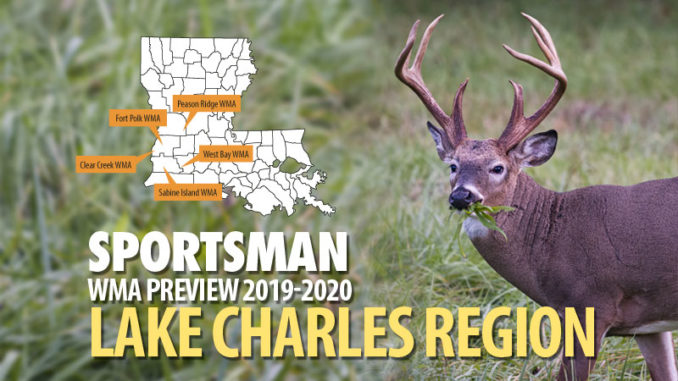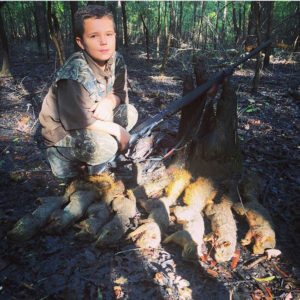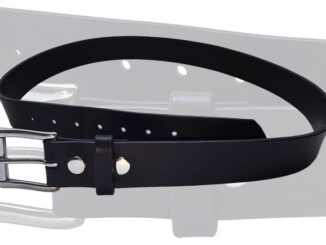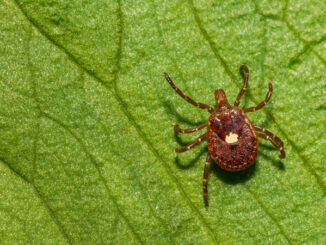
Deer
Bowhunters who like an extra edge in the woods this season will take advantage of a recent report from Wendell Smith, LDWF biologist for the Lake Charles Region.
The Fort Polk WMA’s Zion Hills and Mill Creek areas received no hunting pressure from bowhunters last season because they were closed to military training. Fort Polk WMA is a 105,545-acre WMA in Vernon Parish, a military training facility that requires hunters to check to see if areas they want to hunt are open.
“A lot of that was closed last year for military training, and it’s got a real good population of deer that wasn’t hunted last year. That’s music to a bowhunter’s ears,” said Smith, a 30-year LDWF veteran. “Bowhunters all over the state will be interested. There’s a lot of people looking for opportunities for bowhunting.”
There’s definitely a golden opportunity waiting for them at Zion Hills and Mill Creek on the Fort Polk WMA. Smith suggested scouting that area, looking for signs and rubs, before going after the deer with a bow and arrow because the area is large.
“It’s pretty good-sized. It goes all the way up to the top of the WMA,” he said. “The more you scout, the better your odds will be for bringing home the venison.”
Prescribed burning
Fort Polk WMA had close to 600 deer harvested during the 2018-19 season, based on self-clearing permit information, followed by Peason Ridge WMA with 330. Since then, prescribed burning on the properties in Vernon, Sabine and Natchitoches parishes is expected to produce excellent early successional habitat for all wildlife, consumptive and non-consumptive, Smith reported.
The region’s deer harvest count last season included 257 at Clear Creek WMA and 242 at West Bay WMA.
“Clear Creek and West Bay (have) got a healthy population of deer. We’re seeing fawns there,” Smith said. “This year should be good, weather permitting.”
Ah, the weather bugaboo. Smith pointed out that 40% to 50% of the deer are killed on opening weekend.
“If there’s bad weather, you’re 40% down before the season. (But) some years, when you get good, cold, still weather, you can knock them down,” he said.
Squirrels
Excellent mast production should produce an even larger squirrel population on Sabine Island WMA, the most under-hunted area in the region, according to Smith.

Limits of squirrels are common in the area, where access is by boat only. Squirrel hunting should be even better this season because the mast crop was a bumper one and squirrels should have been eating well ever since, he said.
“If you like to hunt squirrels, there are a lot of them there. There are a lot of squirrels, but you’ve got to have a boat, waders and a damned good compass because you can get lost easy. I’d leave the compass at home and bring a GPS,” Smith said.
Unfortunately, Sabine Island WMA had limited squirrel hunting success last season because of the flooded Calcasieu River. Still, a harvest of 145 squirrels was reported during limited hunting there.
West Bay WMA rivals Sabine Island WMA as a top squirrel-hunting destination. Last season, 1,320 squirrels were reported harvested on the expansive WMA. Also, 563 squirrels were harvested on Fort Polk WMA, and 245 squirrels went in the bag on Peason Ridge WMA last season, according to self-clearing permits.
Woodcock
As popular as the region’s WMAs are for deer, squirrels and ducks, an ever-increasing number of hunters are heading there with hopes of taking aim at woodcock that migrate to southwest Louisiana.
“I get more and more calls from people who have dogs who want to hunt woodcock, which usually show up in November,” Smith said, noting the woodcock harvest was “excellent” last season at Clear Creek WMA and West Bay WMA.
“They always do well on Clear Creek,” Smith said.
Woodcock migrate this far whether there is a freeze up north or not, he said. However, a wet late fall and winter is critical, because the ground has to be soft for the timberdoodles to peck for worms; they can reach as deep as 2 inches underground.
Jump-shooting the tasty gamebird is what makes it a thrilling hunt. Trained dogs are the key.
“I think people who have dogs they train, they would have a good opportunity at Clear Creek and West Bay,” Smith said. “I get calls from Wisconsin, Michigan, even one from California, who want to know if it’s worth bringing their dogs down. There’s guys from Louisiana who know that. I sent them to Clear Creek and West Bay.”
LAKE CHARLES REGION
PROS
Vernon Parish WMA and Peason Ridge WMA deer herds show favorable lactation rates this year, and deer weights suggest a healthy herd.
Clear Creek WMA’s road system is in good shape to allow hunters access to the WMA. Also, the area has six self-clearing permit stations to make access easy.
West Bay WMA is flat, which makes dragging a harvested deer easier across the area.
Sabine Island WMA’s excellent mast production should lead to a high squirrel population.
Marsh Bayou WMA and Walnut Hill WMA both allow the use of squirrel and rabbit dogs the entire hunting season and dog training is allow June 1 through Aug. 31.
CONS
With a majority of pine plantations of different ages, younger stands are thick and may limit visibility on Clear Creek WMA. Also, hilly terrain makes it a challenge to drag a harvested deer out of the area.
West Bay WMA’s roads are prone to flooding in heavy rainfall. Boggy conditions will prevail.
Sabine Island WMA is accessible only by boat and hunters must use hip boots/waders to cross sloughs. Hunter need to bring a GPS. Also, the area’s many young pine plantations limit visibility.
Check out the other regions below:
Hammond Region
Lafayette Region
Minden Region
Monroe Region
Pineville Region
Coastal & Non-Game Resources Division Region


